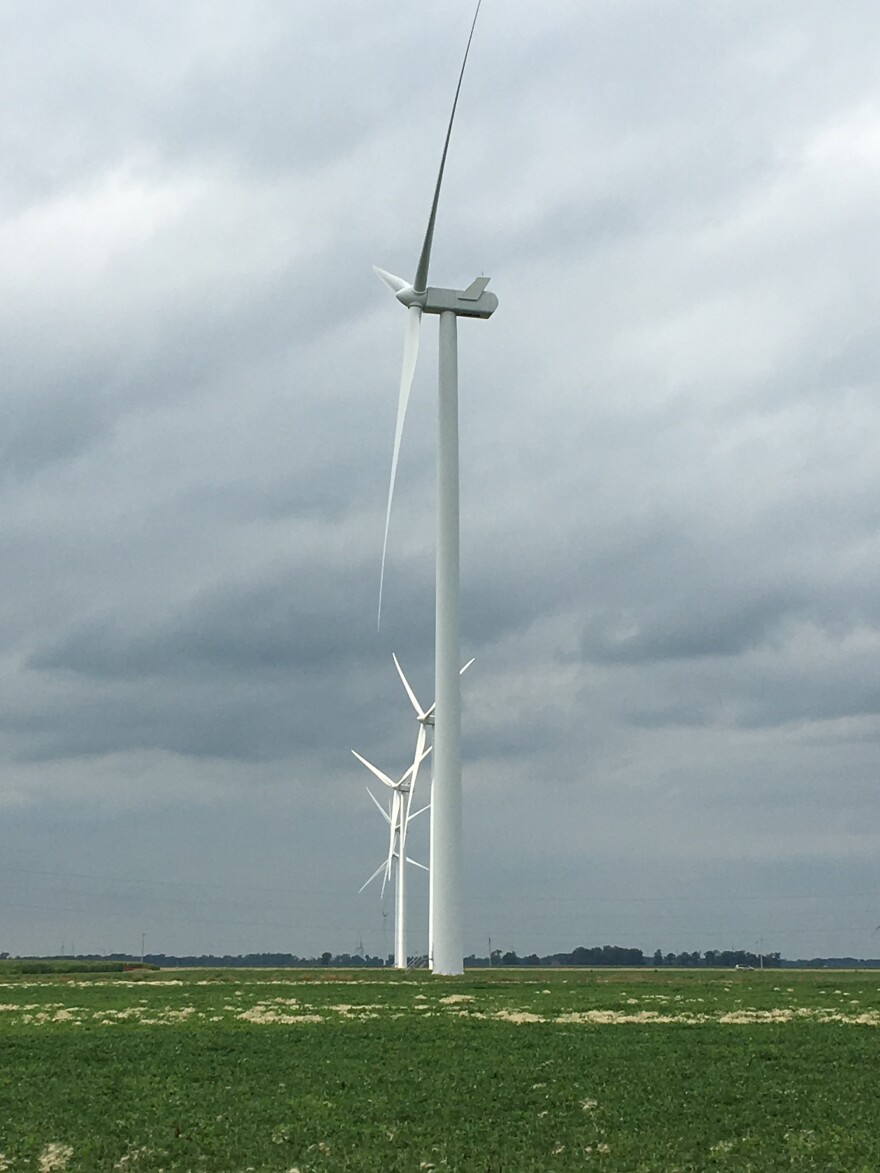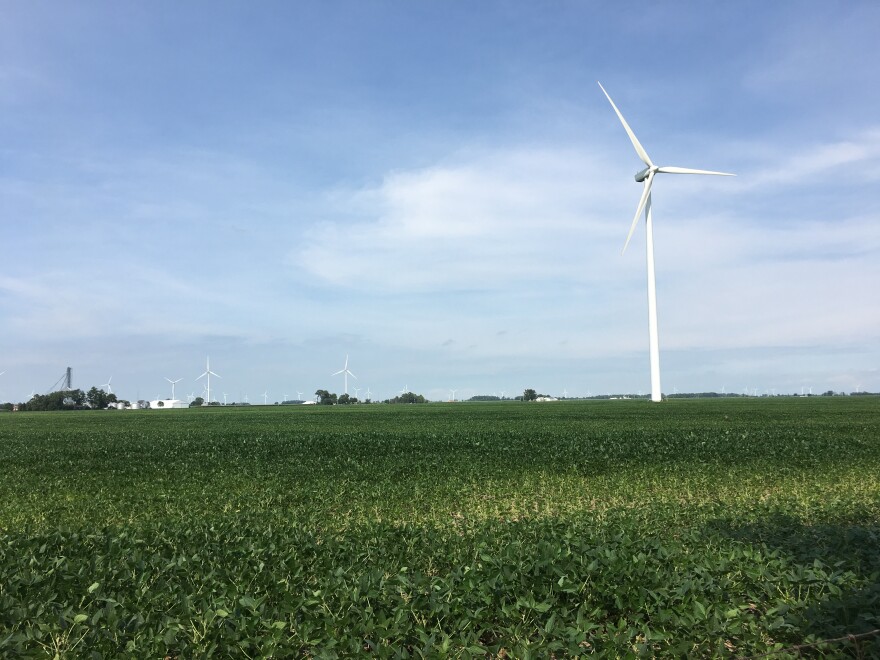The Wind Energy industry has been taking off in the Midwest. The number of wind farms in the region has doubled since 2011. In Ohio though, new development worth up to 1.6 billion dollars has stalled because of the debate over set-back rules, the guidelines that govern the distance between wind farms and property.
That debate is heating up in rural Van Wert County, where a large wind farm was built a few years ago. Community Voices Producer Jason Goins traveled to Van Wert to ask community members about their views on the farms.
“We farm this here, feed the dairy right over there of about 3,000 cows, and then over there, that little white barn, that’s where I grew up," says Claire Harting, a local businessman and farmer who has spent all 79 years of his life in Van Wert County. He has agreed to take me up to the wind turbine that sits on some of his farmland. As we drive up, I can see why wind companies want to build in this county. The ground is smooth and flat, and there are few trees. There’s nothing to stop the wind.
“One of the fellas working on this told me he was in to seven hundred something he had worked on… around seven-hundred-and-twenty, and this was the windiest place he had ever worked on wind towers,” says Harting.

We arrive at Harting’s shared farmland. A long, white tower stands in the middle of it. As we walk up under the turbine, Harting says that when the blades reach their max speed, you can begin to hear them. He mimics the noise.
“You’ll hear a swoosh, swoosh, swoosh…”
Harting makes money off leasing his farmland to the wind-farm developer. He receives several hundred dollars a year for allowing the turbine on his property.
“It will make us more money than if I had corn on this little plot,” says Harting.
He also says he’s always had a good working relationship with the company. He doesn’t understand why some people are against new wind-farm development.
“But now I want you to get right close to one to where you could see how much it’s interfering with the normal people’s life. Does that bother you to look out across that field and not see anything but wind towers? No, it don’t bother me any. Like I said, I farm around it. Most people that don’t want them is the people that’s not going to get one. Understand? [laughs]"
But not everyone in the community agrees with Harting. The issues center on “setback rules”, the guidelines that govern the distance between wind farms and property. Ohio’s rules are actually pretty strict - they’re considered some of the most restrictive in the Midwest. But to Jeremy Kitson, and other members of local anti wind-farm group Citizens for Clear Skies, the rules don’t go far enough.
“If you want to build wind turbines, then don’t build them where people live. Find a place to build them that’s way more remote than me,” he says.
Kitson says even five years after the wind farms construction, the issue is still sensitive among community members.
“This is the most divisive issue that I have ever experienced in my entire life and there is no middle ground. There’s family members that have ground signed up and there’s family members that don’t and those brothers aren’t even talking anymore.”
Susan Monroe, the Van Wert Chamber of Commerce President and Eric Germann, local school board member are frustrated with the current hold up over setback rules. They say the tax revenue from wind-farms has helped fund local projects and schools during a time of state budget cuts. Last year alone, Blue Creek Wind Farm paid approximately $1.5M to local schools. And any revenue from the wind farm is money the counties can count on, says Monroe. “I view this coming from a point of economic development and that’s a guaranteed income stream for the next 20-25 years.”
Kitson, of Citizens for Clear Skies, acknowledges the extra money, but doesn’t think it justifies the downsides. “Are we a county that’s desperate for some economic development? Yeah, I think we are. But at what cost?”
He says the wind farm noise can cause serious health effect. Members of his group say they’ve experienced headaches, sleep deprivation and other neurological issues as a result of the farms. The link between these symptoms and wind farms is still murky - peer reviewed studies acknowledge symptoms but suggest that there is no direct correlation between the two.
Kitson also says his neighbor’s property value went down after the wind farms were built, although a local realty company disputes any change in residential values. “I’m supposed to subject my kids and my family to potential negative health effects? I’m supposed to take a 30% property value hit on my home, which I have probably the most capital invested in in my entire life? No, I am not going to do that,” said Kitson.
I wondered if the county knew all this tension would erupt when they okayed the construction of the wind-farms. Claire Dudgeon, who was the Van Wert county commissioner at the time, says they expected pushback, “Well, I sorta go back to a little bit to what my father told me some years ago… of course he was born in 1901 and he saw the automobile come to existence...new developments come along that change the American way of life, and there are negatives, there are positives, it’s nothing new.”
Right now, the debate is in the hands of state lawmakers. The Ohio Senate recently proposed easing setback rules to open the state up to new development. But the idea met opposition in the Ohio House, and the rules remain the same. For now, the only two operational wind farms in Ohio will remain Paulding and Van Wert counties.
Jason Goins is graduate of WYSO's 2017 Community Voices class. To learn more about Community Voices training, visit: http://wyso.org/community-voices

